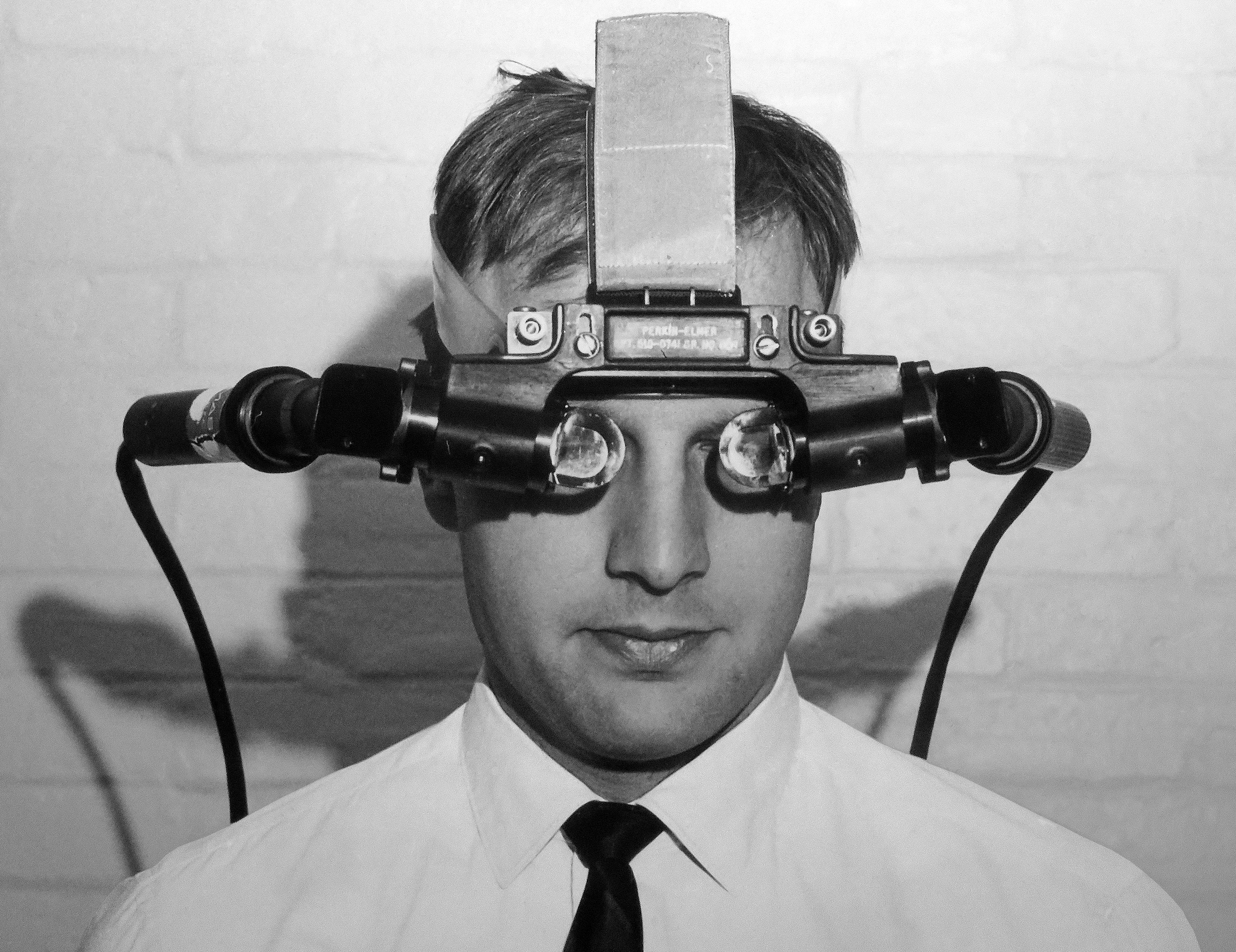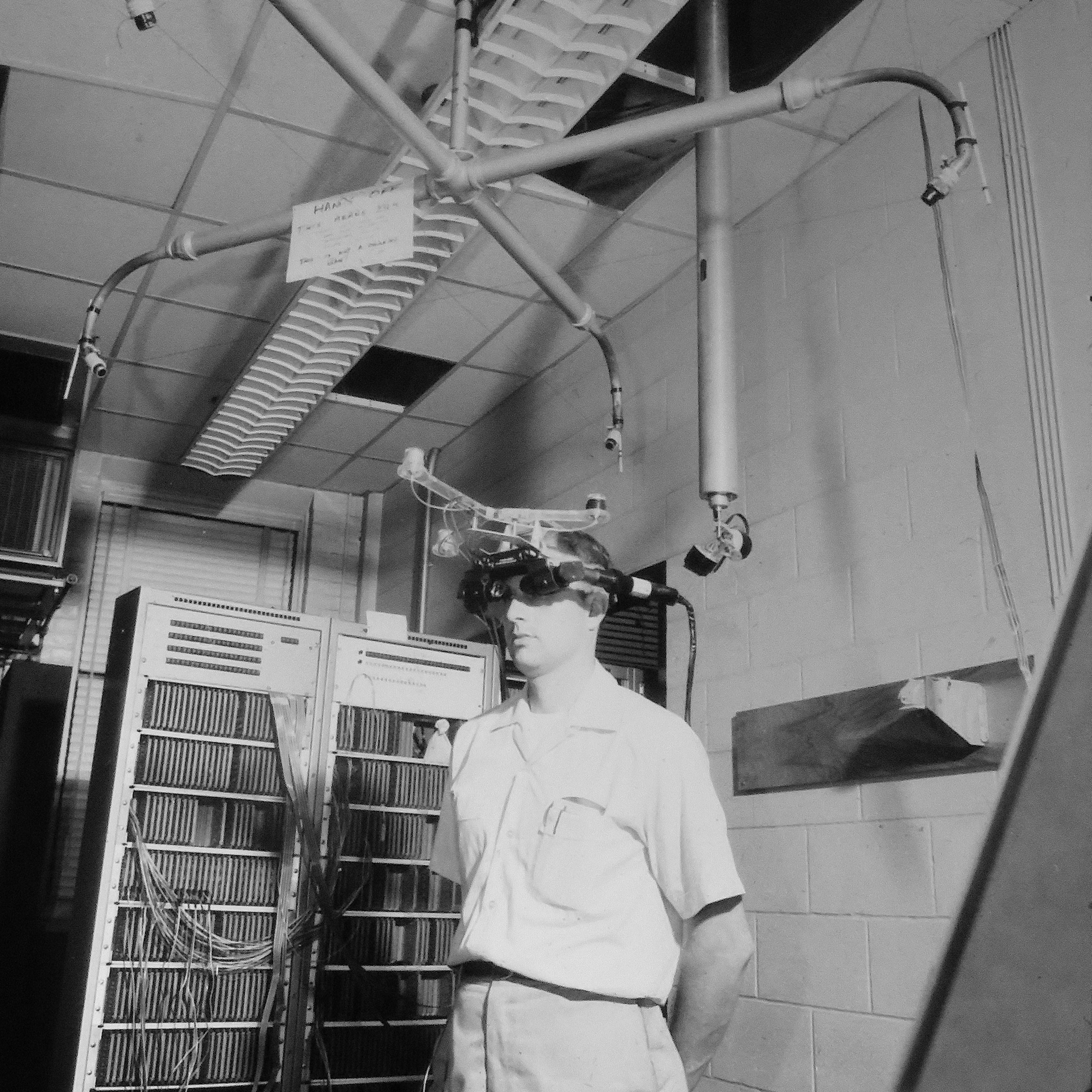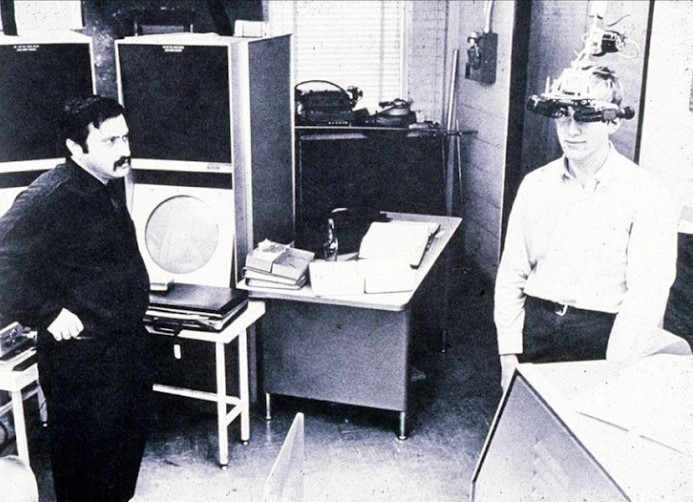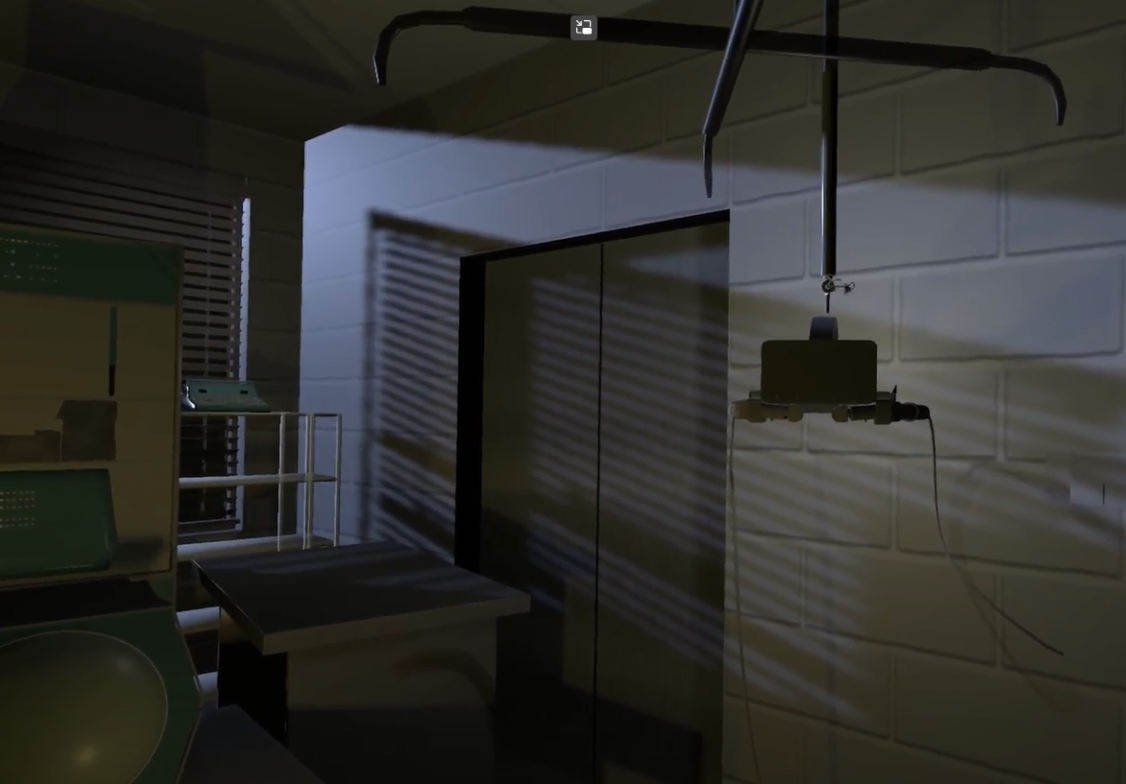Ivan Sutherland's Head-Mounted Display
Ivan Sutherland's HMD (head-mounted display), was one of the earliest augmented reality devices developed in 1968 at his Harvard research lab. It suspended a display in front of the user's eyes and used head tracking, laying the foundation for modern VR and AR technologies.
The Immersive Archive has created a VR simulation of "Ivan Sutherland's HMD" which was captured with high-resolution photogrammetric scanning technologies. In collaboration with The Computer History Museum, we studied the Sutherland archival materials and interviewed his colleagues Bob Sproull and Harry Lewis to recreate the Sutherland lab as accurately as possible.





